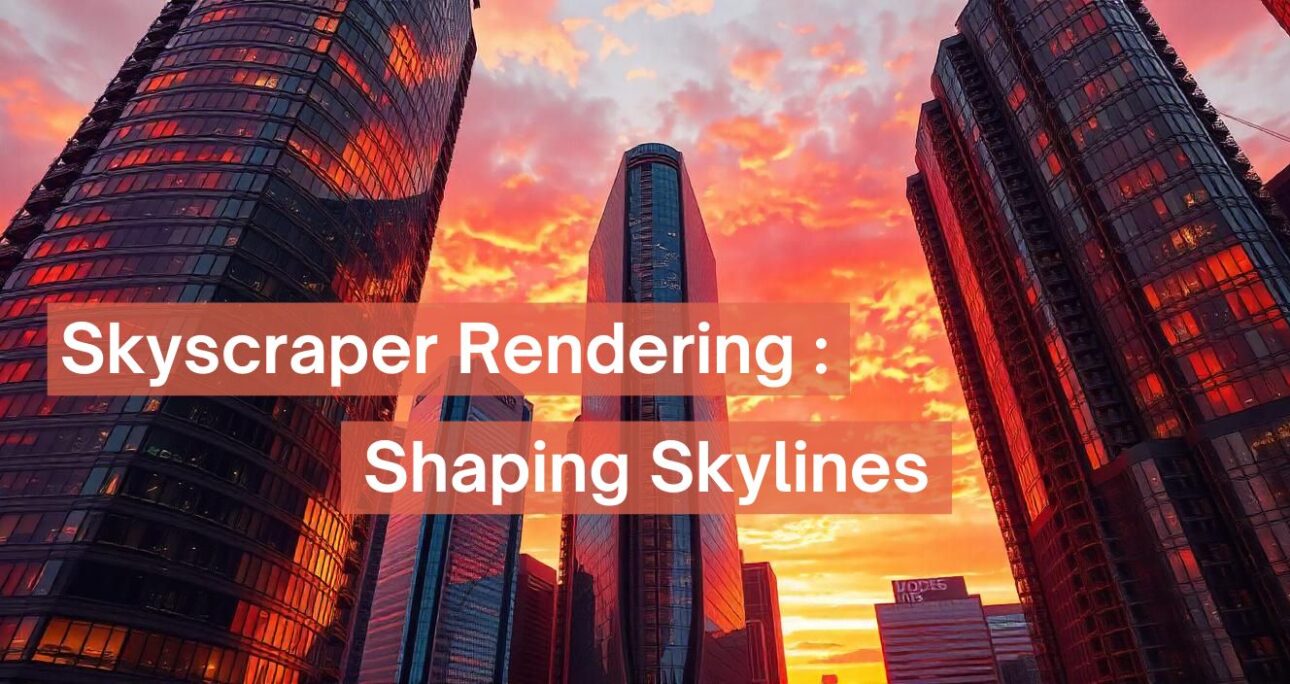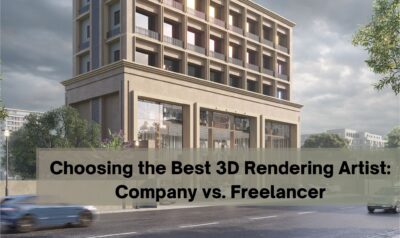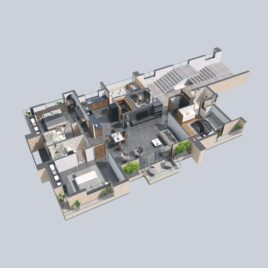In the architectural world, skyscraper rendering is a game-changer. From envisioning towering structures to simulating how they interact with their environment, rendering is essential in translating ambitious blueprints into visual masterpieces. This process, powered by cutting-edge technology and creativity, combines architecture, engineering, and design into breathtaking visuals.
Let’s explore skyscraper rendering, its significance, techniques, and trends shaping the future.
What Is Skyscraper Rendering?
Skyscraper rendering refers to the creation of realistic visual representations of high-rise buildings using advanced software. Architects and developers rely on these visualizations to:
- Communicate design intent.
- Attract investors and stakeholders.
- Address urban planning challenges.
- Create stunning marketing material.
These lifelike depictions allow stakeholders to evaluate design aesthetics, material choices, and environmental impacts before construction begins.
The Role of Technology in Skyscraper Rendering
Modern skyscraper rendering harnesses technology to blur the line between imagination and reality. Here are some of the tools and techniques:
1. 3D Modeling
- Software like AutoCAD, Revit, and SketchUp generates detailed 3D models.
- Models include intricate structural details, material textures, and realistic lighting.
2. Real-Time Rendering
- Tools like Lumion and Unreal Engine enable real-time visualization.
- Adjustments in lighting, texture, or perspective can be previewed instantly.
3. Virtual Reality (VR) Integration
- VR walkthroughs provide immersive experiences of future skyscrapers.
- Clients can navigate through virtual spaces, ensuring design alignment with expectations.
4. Photorealistic Texturing
- Renderers use high-resolution textures to create life-like materials like glass, concrete, and steel.
- Simulating how these materials respond to light adds depth and realism.
5. Artificial Intelligence (AI) and Automation
- AI-driven tools optimize rendering workflows.
- Predictive algorithms suggest design improvements, saving time and reducing costs.
Applications of Skyscraper Rendering
1. Urban Development
Rendering plays a critical role in urban planning by visualizing how skyscrapers integrate into cityscapes. Factors like sunlight patterns, traffic flow, and environmental sustainability are analyzed using these visuals.
2. Marketing and Sales
Eye-catching renders captivate potential investors and buyers. These visuals are often featured in promotional campaigns, offering a glimpse of a building’s potential.
3. Architectural Competitions
For global architecture competitions, high-quality renders help architects convey their vision, often tipping the scales in their favor.
Emerging Trends in Skyscraper Rendering
1. Green Architecture Visualization
Sustainability is at the forefront of modern design. Renderings now emphasize green roofs, vertical gardens, and renewable energy systems.
2. Augmented Reality (AR)
AR enhances on-site presentations by overlaying skyscraper designs onto real-world locations.
3. Hyper-Realism
Pushing boundaries, hyper-realistic rendering mimics real-world imperfections like weathered surfaces and natural wear.
4. Smart City Integration
Renderings increasingly focus on how skyscrapers align with smart city infrastructures, including IoT devices and renewable energy grids.
Challenges in Skyscraper Rendering
Despite advancements, skyscraper rendering poses challenges:
- Data Overload: Managing complex 3D models with vast data requires significant computational power.
- Balancing Realism and Efficiency: Creating photorealistic renders without inflating production timelines is an ongoing challenge.
- Cost Considerations: High-quality rendering can be expensive, especially for smaller firms.
Why Skyscraper Rendering Matters
1. Bridging Vision and Reality
Rendering transforms 2D plans into 3D visualizations, making concepts tangible for stakeholders.
2. Enhancing Collaboration
Realistic visuals foster collaboration among architects, engineers, and clients, ensuring design alignment.
3. Supporting Sustainable Practices
By simulating a building’s interaction with its environment, renderings guide sustainable design decisions.
The Future of Skyscraper Rendering
The field of skyscraper rendering is evolving rapidly, driven by technological innovation. Anticipated developments include:
- AI-Powered Rendering: Enhanced automation and precision will redefine rendering workflows.
- Cloud-Based Solutions: Remote collaboration and processing power will streamline complex projects.
- Interactive Renders: Dynamic renderings will adapt to user inputs in real time, revolutionizing presentations.
Conclusion
Skyscraper rendering is more than just a tool—it’s a bridge between the creative and technical realms. As cities expand vertically, the demand for precise, immersive renderings will only grow. By embracing emerging technologies and addressing challenges, skyscraper rendering will continue shaping the skylines of tomorrow.
Whether you’re an architect, developer, or enthusiast, the journey from concept to skyscraper begins with a compelling render. Welcome to the future of urban innovation.





